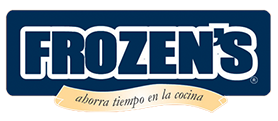What is a freezer?
«Freezer» is an appliance capable to keep temperatures below zero degrees. This device is accepted and recommended by stars according to its freezing power:
* -6 degrees
** -12 degrees
*** -18 degrees
***** -18 degrees
The devices with one and two stars are ordinary congealing appliances. The three and four stars are called freezers. The ones with three stars are basically useful to keep food frozen, while the four stars are specially suitable to freeze and preserve frozen foods.
Freezing. What is it?
Freezing is a process where food is exposed to minimal temperatures reaching -18 ºC in the least possible time. In this process, natural decomposition is stopped, preserving the food’s nutritious values and flavours intact. Frost formation must be prevented, as crystal accumulation may damage solid particles, especially meat fibres. At defrosting, if there is ice, some alterations may be noticed in food flavour and texture.
How to freeze?
Only fresh and quality food can be frozen. It is recommended to freeze foods in portions as they will be consumed.
Defrost cooked food by submerging it into cold water. Uncooked food must be cleaned before freezing. If the food being prepared is to be frozen right away, remove from heat a few minutes before it is completely cooked, as when defrosting and heating the cooking process will be resumed.
What to freeze?
Most kinds of foods can be frozen. However, some foods can suffer alterations on its structure, but while it will not be harmful, food won’t be as tasty when eating it. When freezing, it is very important to respect the freezing time and appropriate way of freezing. Some foods, as potatoes, must be cooked first; others, like vegetables, must be blanched before freezing.
What not to freeze?
There are some restrictions that will not make food unhealthy, but will make food suffer alterations on its flavour and texture. It is not recommended to freeze watery foods. You must not freeze lettuce, eggs, radish, uncooked potatoes, boiled eggs, mayonnaise, yoghurt, or cooked meringue. Jelly must not be frozen, except when mixed with creams or cheese.
Blanching. What is it?
Blanching is cooking vegetables in boiling water no longer than 3 minutes followed by their immersion in frozen water for approximately 5 minutes. For this process, cleaned vegetables must be placed on a basket or a colander and submerged into boiling water until blanched.
Then, vegetables must be strained and placed on cold water for 5 minutes. After this process vegetables must be strained again and they will be ready to be frozen, keeping their colour, flavour and nutritious value.
How to pack for freezing?
Air is the frozen food’s worst enemy. When air dampness gets frozen it produces crystals which modify food flavour and texture.
Solid food must be packed in freezer bags. Watery food, like sauces, can be frozen in a stiff container and then taken out to be packed in a freezer bag. The freezer bag air extraction must be assured by flattening its content and setting the freezing clip. Freezer bags must be made of virgin (not recycled), high density polythene to prevent contamination, and must to be impermeable, preventing the air access. They also must be microwave and boiling water resistant.
